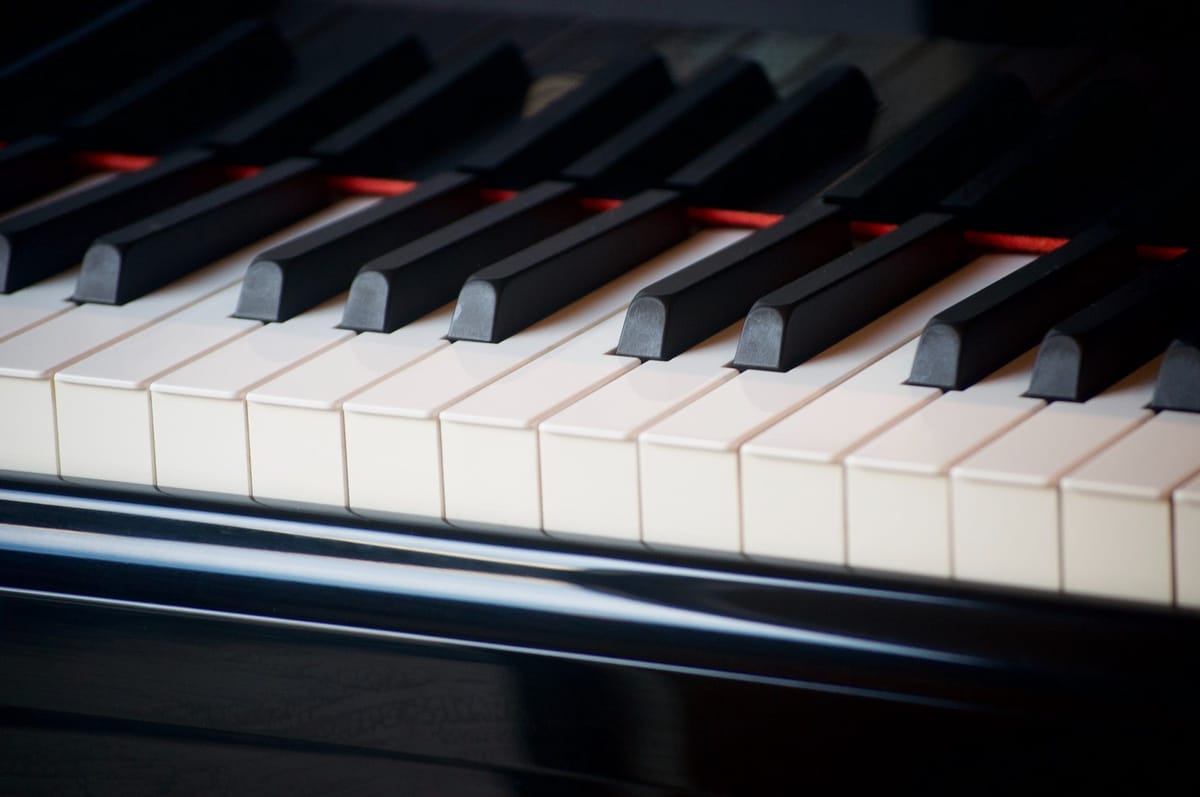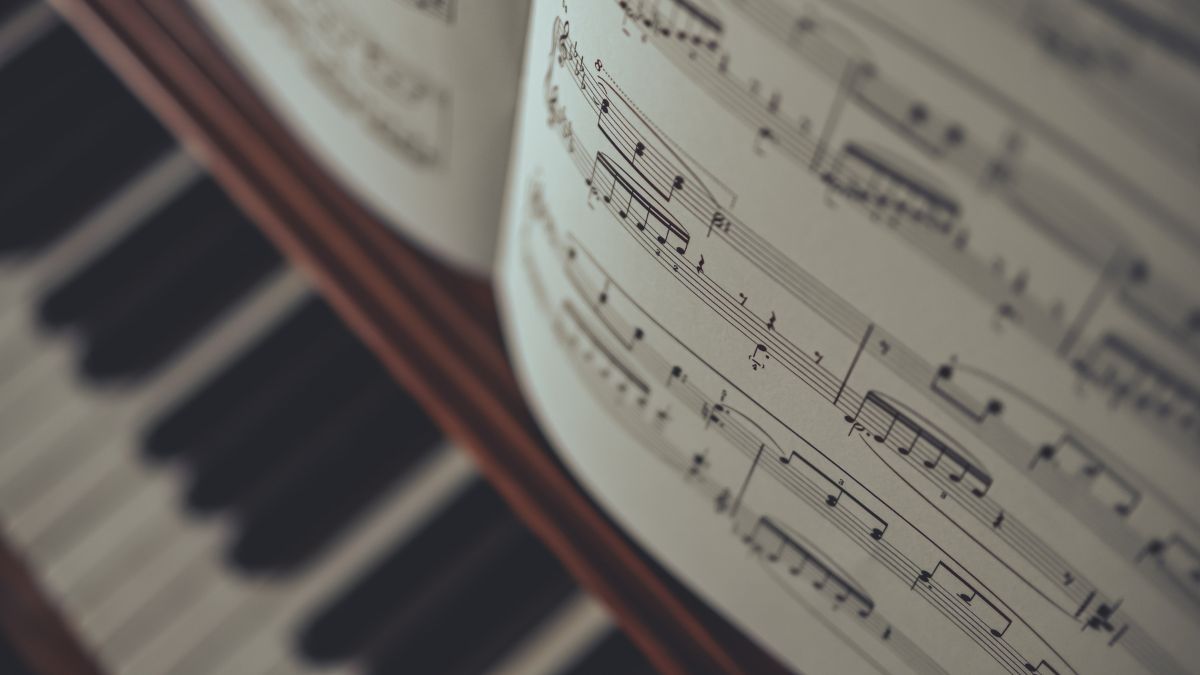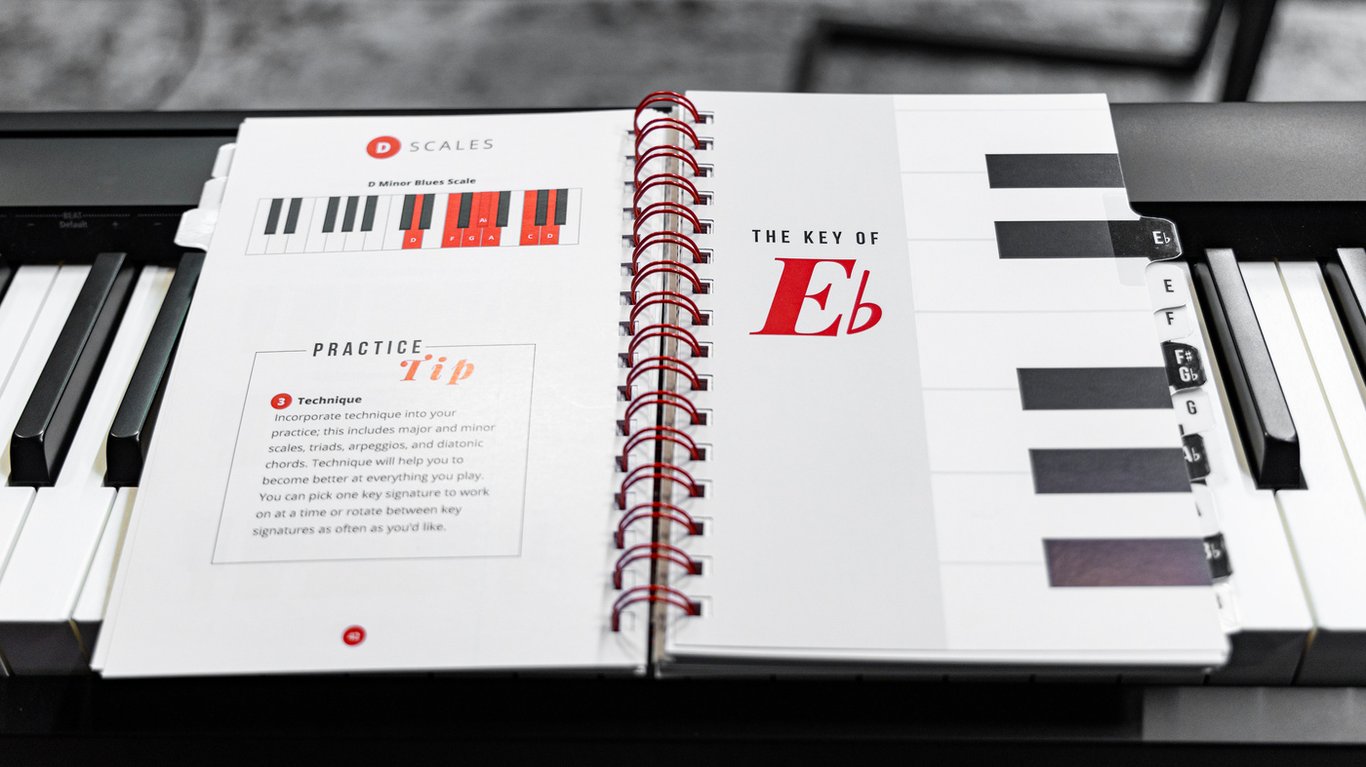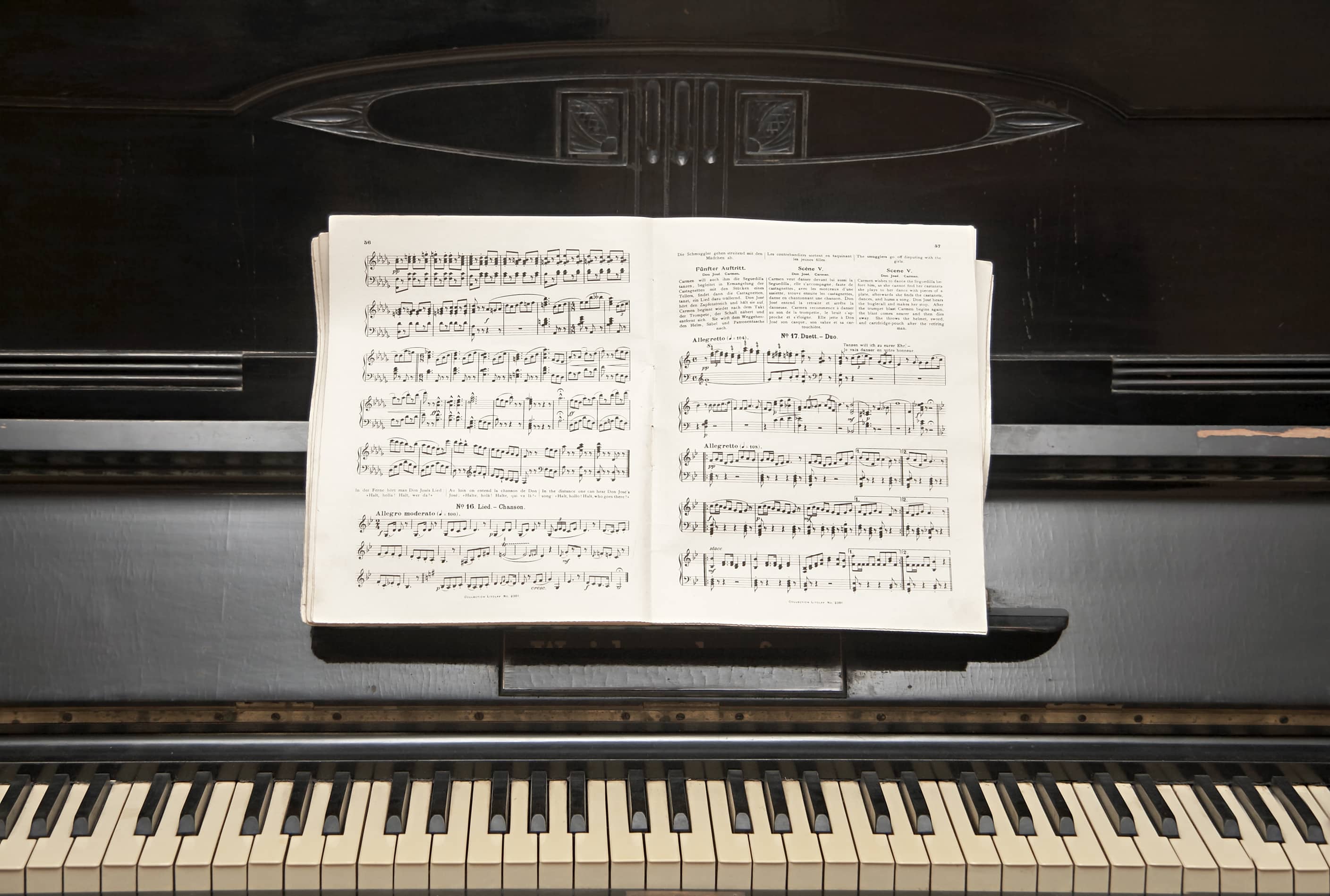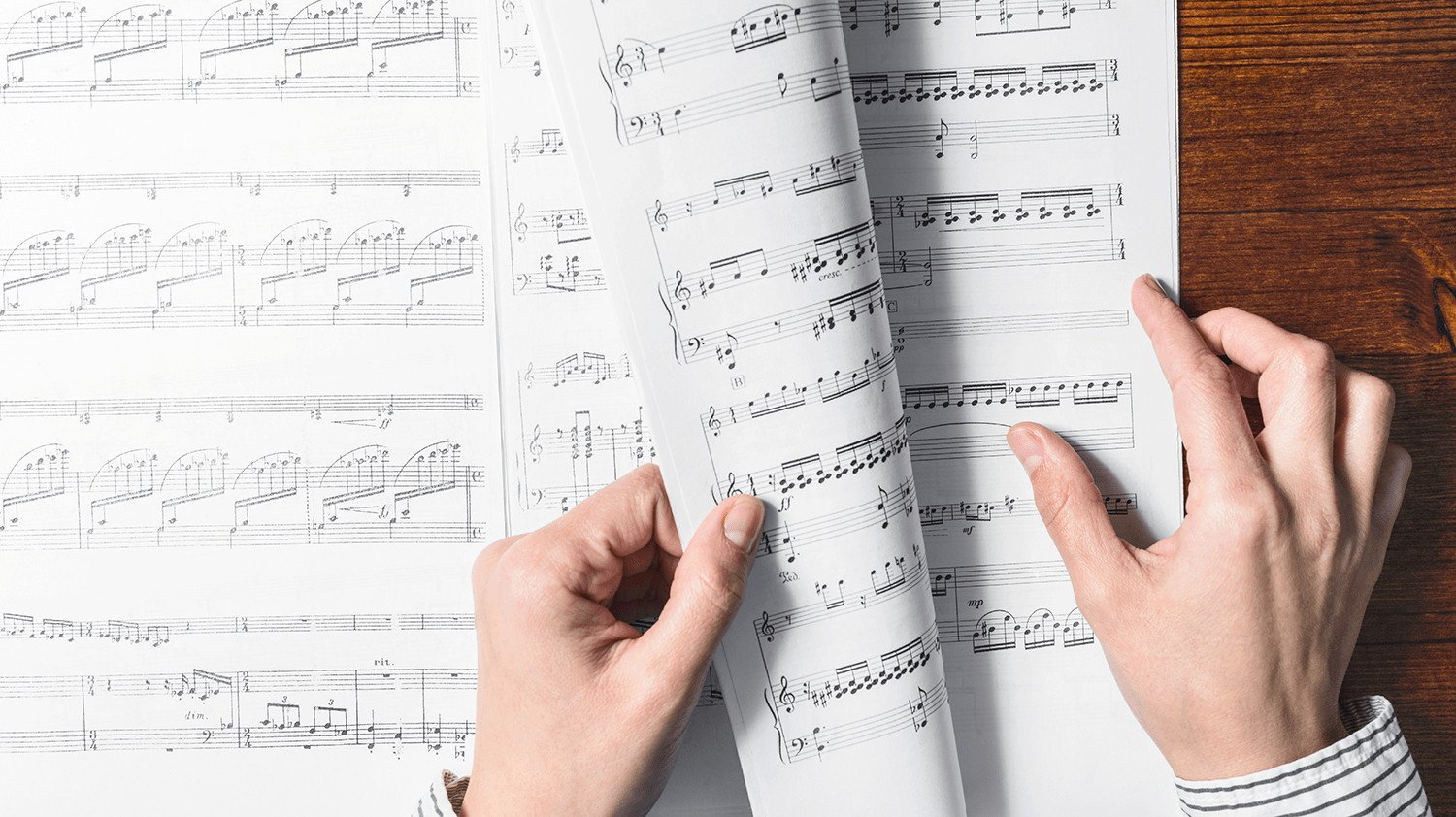Home>Instruments>Piano>How To Get Better At Sight Reading On The Piano


Piano
How To Get Better At Sight Reading On The Piano
Published: February 10, 2024
Improve your piano sight-reading skills with expert tips and techniques. Enhance your piano playing ability and confidence today.
(Many of the links in this article redirect to a specific reviewed product. Your purchase of these products through affiliate links helps to generate commission for AudioLover.com, at no extra cost. Learn more)
Table of Contents
Introduction
Learning to play the piano is a rewarding journey that offers a myriad of benefits, from enhancing cognitive abilities to providing a creative outlet. While mastering the instrument involves various facets, sight reading stands out as a crucial skill for pianists. Sight reading, the ability to play a piece of music from a score without prior practice, is a valuable skill that can significantly elevate a pianist's proficiency and versatility. In this article, we will explore effective strategies to improve sight reading on the piano, empowering aspiring pianists to enhance their musical capabilities.
Sight reading is akin to a language; the more fluent a pianist becomes in this skill, the more effortlessly they can interpret and perform diverse musical compositions. By honing sight reading abilities, pianists can seamlessly navigate through new pieces, explore different genres, and partake in impromptu musical collaborations with confidence. Whether you aspire to become a professional pianist or simply derive joy from playing the instrument, refining your sight reading skills will undoubtedly enrich your musical journey.
As we delve into the intricacies of sight reading on the piano, it's important to approach this skill with patience, dedication, and a willingness to embrace continuous growth. By adopting a proactive mindset and incorporating the following strategies into your practice routine, you can embark on a transformative journey toward becoming a proficient sight reader. Let's embark on this enriching exploration of sight reading on the piano, unlocking the keys to musical fluency and artistic expression.
Understanding Sight Reading
Sight reading encompasses the ability to interpret and perform a musical piece in real-time, directly from the notation on the sheet music. This skill requires pianists to swiftly process musical symbols, note pitches, rhythms, and dynamics while translating them into coherent and expressive sound. Understanding sight reading involves grasping the fundamental elements of music notation and developing the cognitive agility to execute them seamlessly.
At its core, sight reading proficiency hinges on a deep understanding of musical notation. Pianists must be adept at recognizing key signatures, time signatures, note values, and various musical symbols. Familiarity with these elements allows for a more intuitive and efficient interpretation of the music on the score, enabling pianists to focus on musical expression rather than decoding notation.
Furthermore, understanding sight reading involves cultivating a holistic comprehension of the piece. This entails recognizing patterns, chord progressions, and melodic motifs, which facilitates a more comprehensive and nuanced interpretation. By internalizing the structure and musical syntax, pianists can anticipate the trajectory of the piece, leading to a more confident and musically compelling performance.
Developing a keen awareness of rhythm is also integral to sight reading. Pianists must internalize rhythmic patterns and execute them accurately, maintaining a steady pulse throughout the performance. A solid rhythmic foundation not only enhances the coherence of the music but also fosters a sense of musical continuity and momentum.
Understanding sight reading extends beyond mere technical proficiency; it encompasses an appreciation for musical phrasing, dynamics, and emotional expression. Pianists must imbue each note with intention and sensitivity, breathing life into the music as they navigate through the score. This holistic understanding of musical elements converges to form a cohesive and evocative performance, elevating sight reading from a technical exercise to a captivating artistic endeavor.
Developing Finger Dexterity
Enhancing finger dexterity is paramount for pianists aiming to excel in sight reading. The agility and coordination of the fingers directly influence a pianist’s ability to navigate through complex passages with precision and fluidity. Developing finger dexterity involves targeted exercises and deliberate practice routines designed to fortify the muscular control and independence of each digit.
One effective approach to bolstering finger dexterity is through scales and arpeggios. Practicing scales in various keys and patterns not only familiarizes pianists with different tonalities but also cultivates agility and strength in the fingers. Arpeggios, with their intricate fingerings and intervallic movements, further refine finger dexterity, enabling pianists to navigate arpeggiated passages in sight reading with ease and finesse.
Moreover, technical exercises such as Hanon and Czerny studies are invaluable for honing finger dexterity. These exercises target specific finger combinations and movements, systematically challenging and strengthening the fingers while enhancing overall coordination. By integrating these exercises into regular practice sessions, pianists can cultivate the nimbleness and control necessary for proficient sight reading.
In addition to technical exercises, etudes specifically tailored to improve finger independence and agility can be instrumental in developing dexterity. Etudes by renowned composers such as Chopin, Liszt, and Debussy offer engaging musical contexts within which pianists can refine their finger control and dexterity. These musical studies not only enhance technical prowess but also infuse artistic expression into the process of developing finger agility.
Furthermore, incorporating finger-strengthening tools such as hand exercisers and stress balls into practice routines can augment the development of finger dexterity. These tools provide resistance that challenges the fingers, fostering strength and flexibility essential for navigating intricate passages during sight reading.
By diligently incorporating these exercises and tools into their practice regimen, pianists can fortify their finger dexterity, empowering them to tackle the demands of sight reading with confidence and proficiency.
Practicing Regularly
Consistent and structured practice is the cornerstone of mastering sight reading on the piano. Regular practice not only hones technical skills but also cultivates a deep familiarity with diverse musical patterns and styles, bolstering a pianist’s ability to interpret and perform unfamiliar pieces with ease.
Establishing a dedicated practice routine is essential for nurturing sight reading proficiency. Setting aside regular, uninterrupted practice sessions enables pianists to focus on refining their sight reading skills without distractions. Whether it’s a daily practice schedule or a consistent weekly routine, committing to regular practice lays a solid foundation for continual improvement.
During practice sessions, it’s beneficial to allocate specific time for sight reading exercises. Integrating sight reading into daily practice allows pianists to gradually expand their repertoire of playable pieces while sharpening their ability to interpret new music on the spot. Setting aside dedicated time for sight reading underscores its importance in the overall development of piano proficiency.
Furthermore, varying the musical material during practice sessions is crucial for honing sight reading skills. Incorporating a diverse range of musical genres, styles, and difficulty levels exposes pianists to a broad spectrum of musical vocabulary, fostering adaptability and versatility in sight reading. Additionally, regularly introducing new sight reading material prevents stagnation and encourages continual growth.
Consistency in practice also nurtures muscle memory, a vital component of proficient sight reading. Regularly engaging with the piano strengthens the neural pathways associated with finger movements and musical patterns, facilitating quicker and more accurate responses during sight reading. With consistent practice, the physical and mental aspects of sight reading become increasingly intuitive and interconnected.
Moreover, consistent practice instills confidence and familiarity with the instrument, enabling pianists to approach sight reading with a sense of assurance and composure. The assurance gained through regular practice empowers pianists to tackle unfamiliar pieces with poise, adaptability, and a keen musical intuition.
In essence, regular and focused practice forms the bedrock of sight reading mastery, equipping pianists with the skills and confidence to navigate through diverse musical landscapes with fluency and artistry.
Using Sight Reading Exercises
Engaging in targeted sight reading exercises is a pivotal strategy for enhancing proficiency and confidence in interpreting and performing music in real time. These exercises are specifically designed to challenge pianists with unfamiliar musical passages, fostering adaptability, and strengthening their ability to decode and execute notation on the spot.
One effective approach to sight reading exercises involves utilizing sight reading anthologies and graded repertoire collections. These resources offer a diverse array of musical excerpts spanning various styles, periods, and difficulty levels, providing pianists with ample material to continually sharpen their sight reading skills. By systematically working through these collections, pianists can gradually expand their sight reading prowess while acquainting themselves with a broad spectrum of musical vocabulary.
Another valuable sight reading exercise involves practicing duets or ensemble music with a fellow musician. Collaborative sight reading not only cultivates ensemble skills but also challenges pianists to synchronize and adapt to the musical input of their partner in real time. This collaborative dynamic enhances adaptability and responsiveness, refining a pianist’s ability to navigate through unfamiliar musical contexts with agility and precision.
Additionally, sight reading exercises can be augmented with technology through the use of sight reading apps and software. These tools offer a structured and interactive platform for pianists to engage in sight reading drills, providing instant feedback and progress tracking. By incorporating sight reading apps into practice routines, pianists can augment their sight reading skills while leveraging the benefits of technological assistance.
Furthermore, creating personalized sight reading exercises tailored to specific areas of challenge can be immensely beneficial. This may involve isolating particular musical elements such as rhythm, key signatures, or dynamic contrasts and crafting exercises to target and refine these areas. Customizing sight reading exercises allows pianists to address their unique areas of growth, fostering a more comprehensive and tailored approach to skill development.
By integrating these diverse sight reading exercises into practice routines, pianists can systematically fortify their ability to interpret and perform music in real time, unlocking a heightened level of adaptability, fluency, and musical expression.
Improving Music Theory Knowledge
A robust understanding of music theory serves as a cornerstone for proficient sight reading on the piano. Music theory knowledge empowers pianists to decipher the structural, harmonic, and rhythmic elements present in a musical score, enhancing their ability to interpret and perform unfamiliar pieces with accuracy and insight.
One fundamental aspect of music theory crucial to sight reading is a comprehensive grasp of key signatures and their respective scales. Familiarity with key signatures enables pianists to anticipate the tonal landscape of a piece, facilitating a more informed and efficient interpretation. Moreover, understanding the harmonic implications of different keys enriches a pianist’s interpretation, allowing for heightened musical expression during sight reading.
Furthermore, a solid understanding of rhythmic notation and time signatures is imperative for proficient sight reading. Pianists equipped with a robust grasp of rhythmic patterns can navigate through complex rhythms with confidence and precision, ensuring a coherent and steady performance. Additionally, an in-depth comprehension of time signatures enables pianists to internalize the rhythmic structure of a piece, fostering a more intuitive and fluid interpretation.
Delving into the intricacies of musical form and structure is also essential for sight reading proficiency. A nuanced understanding of musical forms such as sonata-allegro, ternary, or rondo equips pianists with the insight to discern the overarching architecture of a piece, facilitating a more informed and musically expressive performance during sight reading.
Moreover, knowledge of chord progressions, cadences, and harmonic analysis enriches a pianist’s interpretative abilities during sight reading. Understanding the harmonic framework of a piece enables pianists to anticipate and navigate through harmonic shifts and resolutions with clarity and musical acumen, elevating the expressiveness and coherence of their sight reading performance.
Additionally, a comprehensive understanding of musical phrasing, articulation, and dynamics enhances a pianist’s interpretative depth during sight reading. Proficiency in music theory equips pianists with the tools to imbue their sight reading performance with nuanced expression, shaping the musical phrases and dynamics with sensitivity and artistry.
By continuously expanding and refining their knowledge of music theory, pianists can elevate their sight reading proficiency, unlocking a deeper understanding and appreciation of the musical intricacies embedded within the score.
Utilizing Metronome and Rhythm Exercises
The metronome, a quintessential tool in a pianist’s arsenal, plays a pivotal role in honing rhythm and temporal precision, both of which are integral to proficient sight reading. By incorporating the metronome into practice sessions, pianists can fortify their rhythmic acuity and cultivate a steadfast sense of timing, essential for navigating through unfamiliar musical passages with confidence and accuracy.
One effective application of the metronome in sight reading practice involves setting it to a moderate tempo and gradually increasing the speed as proficiency improves. This gradual tempo escalation challenges pianists to adapt to varying rhythmic demands, fostering agility and precision in their sight reading endeavors. Additionally, practicing with the metronome cultivates a disciplined and unwavering sense of pulse, ensuring a steady and consistent tempo throughout the sight reading performance.
Rhythm exercises, ranging from simple rhythmic patterns to complex syncopations, are invaluable for enhancing rhythmic dexterity and fluency. Engaging in rhythmic drills that isolate specific rhythmic challenges encountered in sight reading empowers pianists to internalize and execute diverse rhythmic patterns with ease and accuracy. By systematically addressing rhythmic intricacies, pianists can navigate through rhythmically diverse musical passages during sight reading with confidence and poise.
Furthermore, practicing rhythmic subdivisions and polyrhythms augments a pianist’s rhythmic proficiency, fostering a heightened awareness of rhythmic intricacies present in sight reading material. By internalizing and mastering complex rhythmic subdivisions, pianists can navigate through intricate rhythmic passages with clarity and assurance, elevating the coherence and precision of their sight reading performances.
Moreover, integrating rhythmic sight reading exercises into practice routines challenges pianists to interpret and execute unfamiliar rhythmic patterns in real time. These exercises present pianists with diverse rhythmic scenarios, fostering adaptability and agility in navigating through rhythmically varied musical passages. By consistently engaging with rhythmic sight reading exercises, pianists refine their ability to decode and perform complex rhythms with fluency and confidence.
By leveraging the metronome and engaging in targeted rhythm exercises, pianists can fortify their rhythmic prowess, cultivating a steadfast sense of pulse and precision essential for navigating through diverse rhythmic landscapes with confidence and artistry during sight reading.
Seeking Professional Guidance
Seeking guidance from a seasoned piano instructor or mentor can significantly accelerate a pianist’s journey toward mastering sight reading. A knowledgeable and experienced teacher can provide personalized instruction, insightful feedback, and tailored exercises that cater to an individual’s specific strengths and areas for improvement, fostering holistic growth in sight reading proficiency.
Professional guidance offers invaluable mentorship, enabling pianists to receive constructive feedback on their sight reading abilities. A skilled instructor can identify nuances in a pianist’s performance, offering targeted guidance to enhance interpretative depth, technical precision, and overall musicality during sight reading. This personalized feedback fosters continual refinement and growth, empowering pianists to elevate their sight reading skills to new heights.
Moreover, a piano instructor can curate a structured and progressive sight reading curriculum tailored to an individual’s skill level and aspirations. Through a systematic approach to skill development, pianists can cultivate a strong foundation in sight reading while advancing toward more complex and demanding repertoire, ensuring a comprehensive and well-rounded growth trajectory.
Furthermore, professional guidance provides access to a wealth of sight reading resources, including curated sight reading materials, exercises, and instructional literature. Leveraging these resources under the guidance of an experienced instructor equips pianists with a diverse and comprehensive toolkit for honing their sight reading skills, fostering continual improvement and musical enrichment.
Additionally, mentorship from a seasoned pianist offers valuable insights into effective practice strategies and approaches to conquering sight reading challenges. By leveraging the wisdom and experience of a mentor, pianists can navigate through common pitfalls, develop efficient practice routines, and cultivate a resilient and adaptive mindset essential for conquering the demands of sight reading.
Professional guidance also instills accountability and motivation, nurturing a disciplined and focused approach to sight reading practice. A dedicated instructor provides structure, encouragement, and support, fostering a conducive environment for continual growth and progress in sight reading proficiency.
In essence, seeking professional guidance from a knowledgeable piano instructor or mentor empowers pianists to embark on a purposeful and guided journey toward mastering sight reading, unlocking their full potential as expressive and proficient musicians.
Conclusion
Mastering sight reading on the piano is a transformative endeavor that demands dedication, perseverance, and a multifaceted approach to skill development. Through a deep understanding of music theory, diligent practice, and the integration of targeted exercises, pianists can fortify their ability to interpret and perform music in real time with fluency and artistry.
By honing finger dexterity, cultivating rhythmic precision, and expanding music theory knowledge, pianists lay a robust foundation for navigating through diverse musical landscapes with confidence and insight. The utilization of the metronome, engaging in collaborative sight reading, and seeking professional guidance further enriches the sight reading journey, fostering adaptability, musical depth, and continual growth.
As pianists embark on this enriching exploration of sight reading, it is essential to approach the journey with patience, resilience, and a willingness to embrace ongoing growth. Each practice session, exercise, and mentorship opportunity contributes to the gradual refinement of sight reading proficiency, empowering pianists to expressively and confidently interpret a wide array of musical compositions in real time.
Ultimately, the mastery of sight reading on the piano transcends technical proficiency; it embodies a profound connection to the language of music, enabling pianists to communicate and express themselves with clarity, nuance, and emotional depth. By embracing the strategies outlined in this article and embarking on a purposeful and diligent sight reading journey, pianists can unlock the keys to musical fluency and artistic expression, enriching their musical endeavors and captivating audiences with their interpretative prowess.



